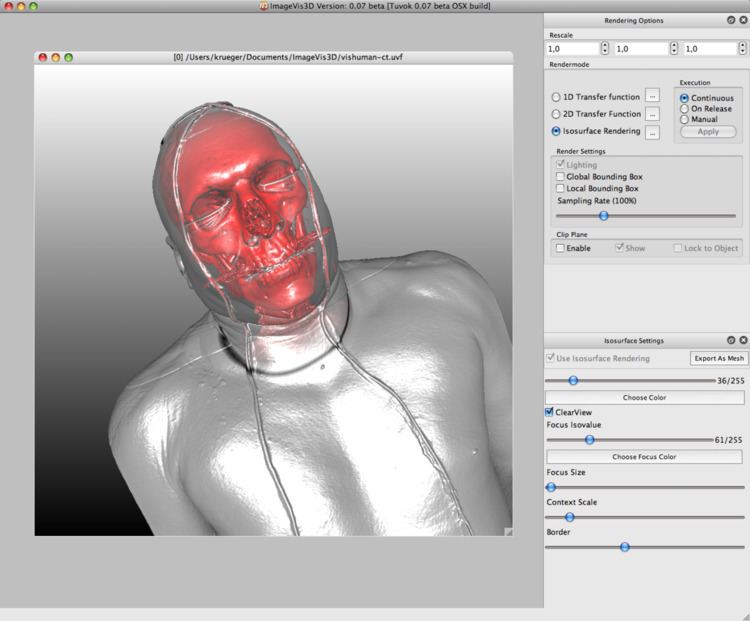Written in C++, OpenGL, DirectX Type Volume rendering | Operating system License MIT | |
 | ||
Developer(s) Scientific Computing and Imaging Institute Stable release 3.1.0 / April 8, 2014; 2 years ago (2014-04-08) | ||
ImageVis3D is a lightweight, open source, volume rendering application for the interactive visualization of very large volumetric data sets. It utilizes both the slice based as well as the GPU ray casting approach to visualize the volume data. The source code is currently maintained in a publicly accessible Subversion repository by the Scientific Computing and Imaging Institute at the University of Utah.
Contents
History
ImageVis3D's development was initiated in 2007 by the NIH/NCRR Center for Integrative Biomedical Computing and additionally supported by the DOE Visualization and Analytics Center for Enabling Technologies at the SCI Institute. After an initial development phase of about one year the project was released under the MIT license and since then multiple institutions from America, Europe and Asia are contributing to the software. Recently the first version of ImageVis3D mobile has been released, allowing for the mobile visualization of volumetric scalar data.
Features
ImageVis3D in other applications
ImageVis3D or more precisely its volume rendering core has been incorporated into other applications such as VisIt and VisTrails
Sample Datasets
Some sample datasets are now available from the ImageVis3D download page.
